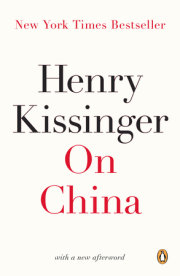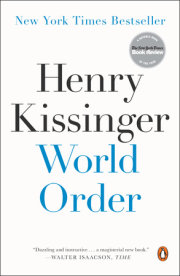Chapter 1The Singularity of China SOCIETIES AND NATIONS tend to think of themselves as eternal. They also cherish a tale of their origin. A special feature of Chinese civilization is that it seems to have no beginning. It appears in history less as a conventional nation-state than a permanent natural phenomenon. In the tale of the Yellow Emperor, revered by many Chinese as the legendary founding ruler, China seems already to exist. When the Yellow Emperor appears in myth, Chinese civilization has fallen into chaos. Competing princes harass each other and the people, yet an enfeebled ruler fails to maintain order. Levying an army, the new hero pacifies the realm and is acclaimed as emperor.1
The Yellow Emperor has gone down in history as a founding hero; yet in the founding myth, he is reestablishing, not creating, an empire. China predated him; it strides into the historical consciousness as an established state requiring only restoration, not creation. This paradox of Chinese history recurs with the ancient sage Confucius: again, he is seen as the “founder” of a culture although he stressed that he had invented nothing, that he was merely trying to reinvigorate the principles of harmony which had once existed in the golden age but had been lost in Confucius’s own era of political chaos.
Reflecting on the paradox of China’s origins, the nineteenth-century missionary and traveler, the Abbé Régis-Evariste Huc, observed:
Chinese civilization originates in an antiquity so remote that we vainly endeavor to discover its commencement. There are no traces of the state of infancy among this people. This is a very peculiar fact respecting China. We are accustomed in the history of nations to find some well-defined point of departure, and the historic documents, traditions, and monuments that remain to us generally permit us to follow, almost step by step, the progress of civilization, to be present at its birth, to watch its development, its onward march, and in many cases, its subsequent decay and fall. But it is not thus with the Chinese. They seem to have been always living in the same stage of advancement as in the present day; and the data of antiquity are such as to confirm that opinion.
When Chinese written characters first evolved, during the Shang Dynasty in the second millennium B.C., ancient Egypt was at the height of its glory. The great city-states of classical Greece had not yet emerged, and Rome was millennia away. Yet the direct descendant of the Shang writing system is still used by well over a billion people today. Chinese today can understand inscriptions written in the age of Confucius; contemporary Chinese books and conversations are enriched by centuries-old aphorisms citing ancient battles and court intrigues.
At the same time, Chinese history featured many periods of civil war, interregnum, and chaos. After each collapse, the Chinese state reconstituted itself as if by some immutable law of nature. At each stage, a new uniting figure emerged, following essentially the precedent of the Yellow Emperor, to subdue his rivals and reunify China (and sometimes enlarge its bounds). The famous opening of
The Romance of the Three Kingdoms, a fourteenth-century epic novel treasured by centuries of Chinese (including Mao, who is said to have pored over it almost obsessively in his youth), evokes this continuous rhythm: “The empire, long divided, must unite; long united, must divide. Thus it has ever been.” Each period of disunity was viewed as an aberration. Each new dynasty reached back to the previous dynasty’s principles of governance in order to reestablish continuity. The fundamental precepts of Chinese culture endured, tested by the strain of periodic calamity.
Before the seminal event of Chinese unification in 221 B.C., there had been a millennium of dynastic rule that gradually disintegrated as the feudal subdivisions evolved from autonomy to independence. The culmination was two and a half centuries of turmoil recorded in history as the Warring States period (475–221 B.C.). Its European equivalent would be the interregnum between the Treaty of Westphalia in 1648 and the end of the Second World War, when a multiplicity of European states was struggling for preeminence within the framework of the balance of power. After 221 B.C., China maintained the ideal of empire and unity but followed the practice of fracturing, then reuniting, in cycles sometimes lasting several hundred years.
When the state fractured, wars between the various components were fought savagely. Mao once claimed that the population of China declined from fifty million to ten million during the so-called Three Kingdoms period (A.D. 220–80),4 and the conflict among the contending groups between the two world wars of the twentieth century was extremely bloody as well.
At its ultimate extent, the Chinese cultural sphere stretched over a continental area much larger than any European state, indeed about the size of continental Europe. Chinese language and culture, and the Emperor’s political writ, expanded to every known terrain: from the steppelands and pine forests in the north shading into Siberia, to the tropical jungles and terraced rice farms in the south; from the east coast with its canals, ports, and fishing villages, to the stark deserts of Central Asia and the ice-capped peaks of the Himalayan frontier. The extent and variety of this territory bolstered the sense that China was a world unto itself. It supported a conception of the Emperor as a figure of universal consequence, presiding over
tian xia, or “All Under Heaven.”
The Era of Chinese Preeminence Through many millennia of Chinese civilization, China was never obliged to deal with other countries or civilizations that were comparable to it in scale and sophistication. India was known to the Chinese, as Mao later noted, but for much of history it was divided into separate kingdoms. The two civilizations exchanged goods and Buddhist influences along the Silk Road but were elsewhere walled off from casual contact by the almost impenetrable Himalayas and the Tibetan Plateau. The massive and forbidding deserts of Central Asia separated China from the Near Eastern cultures of Persia and Babylonia and even more from the Roman Empire. Trade caravans undertook intermittent journeys, but China as a society did not engage societies of comparable scale and achievement. Though China and Japan shared a number of core cultural and political institutions, neither was prepared to recognize the other’s superiority; their solution was to curtail contact for centuries at a time. Europe was even further away in what the Chinese considered the Western Oceans, by definition inaccessible to Chinese culture and pitiably incapable of acquiring it—as the Emperor told a British envoy in 1793.
The territorial claims of the Chinese Empire stopped at the water’s edge. As early as the Song Dynasty (960–1279), China led the world in nautical technology; its fleets could have carried the empire into an era of conquest and exploration. Yet China acquired no overseas colonies and showed relatively little interest in the countries beyond its coast. It developed no rationale for venturing abroad to convert the barbarians to Confucian principles or Buddhist virtues. When the conquering Mongols commandeered the Song fleet and its experienced captains, they mounted two attempted invasions of Japan. Both were turned back by inclement weather—the
kamikaze (or “Divine Wind”) of Japanese lore. Yet when the Mongol Dynasty collapsed, the expeditions, though technically feasible, were never again attempted. No Chinese leader ever articulated a rationale for why China would want to control the Japanese archipelago.
But in the early years of the Ming Dynasty, between 1405 and 1433, China launched one of history’s most remarkable and mysterious naval enterprises: Admiral Zheng He set out in fleets of technologically unparalleled “treasure ships” to destinations as far as Java, India, the Horn of Africa, and the Strait of Hormuz. At the time of Zheng’s voyages, the European age of exploration had not yet begun. China’s fleet possessed what would have seemed an unbridgeable technological advantage: in the size, sophistication, and number of its vessels, it dwarfed the Spanish Armada (which was still 150 years away).
Copyright © 2011 by Henry Kissinger. All rights reserved. No part of this excerpt may be reproduced or reprinted without permission in writing from the publisher.













